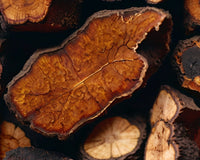Himalayan Salt Hype
People claim that salt can do all kinds of things. Rumor has it that it is healthier because it contains higher concentrations of trace elements. In the form of a lamp, the company claims it can relieve symptoms of seasonal affective disorder (SAD) by clearing the air of pollutants such as dust and pollen, increasing energy and improving sleep. It is speculated that it does this by absorbing water molecules from the air and releasing negative air ions, which are said to remove particles such as dust, which can cause respiratory problems such as allergies and asthma, and affect mood. Spas have also jumped on the bandwagon with claims to offer treatments based on Himalayan salt, where people sit in a room and breathe deeply while tiny salt particles are dispersed into the surrounding area, ostensibly easing respiratory ailments.
Marketers tout their alleged ability to release negative ions, which can enhance physical and emotional health. This is based on the idea that the air near moving water contains high levels of negative ions, which some researchers believe is one of the reasons spending time in nature is good for your health. However, it is more doubtful whether man-made products can have the same effect.
Research on Himalayan Salt
Some data suggests that bursts of positive ions—such as those from electronics or hot air—may harm emotional and physical health by increasing feelings of stress and anxiety, and some studies suggest that negative ions in the air may have the opposite effect. and improve people's mood. But it's not a definite statement - pink salt lamps haven't been shown in studies to produce negative ions, anyway. There is no scientific basis for such claims related to Himalayan salt lamps.
Even air purifiers that do produce negative air ions - so-called "ionizers" - are usually too small to be effective, and experts don't recommend them. Salt lamps may also have a significant, unrelated disadvantage. In January, 80,000 pink Himalayan salt lamps were recalled after they were found to cause shock and catch fire.
As for table salt, some believe it tastes better when cooking than the regular white variety, which may well be true for some people. All salts vary in trace mineral content and texture. Proponents claim pink salt contains more minerals than regular salt - but you're unlikely to get any additional health benefits from consuming it. Pink Himalayan salt is nutritionally very similar to regular salt. It's just prettier and more expensive.
Salt therapy in spas is also not supported by solid evidence. Salt therapy has been used and debated in medical practice for centuries, but more recently it has been used as a complementary or alternative medicine practice. It has not been clearly studied and the true benefits are unknown. One possible benefit of this therapy may not come from salt at all. Giving yourself 30-45 minutes of quiet time is a well-known way to reduce stress.





